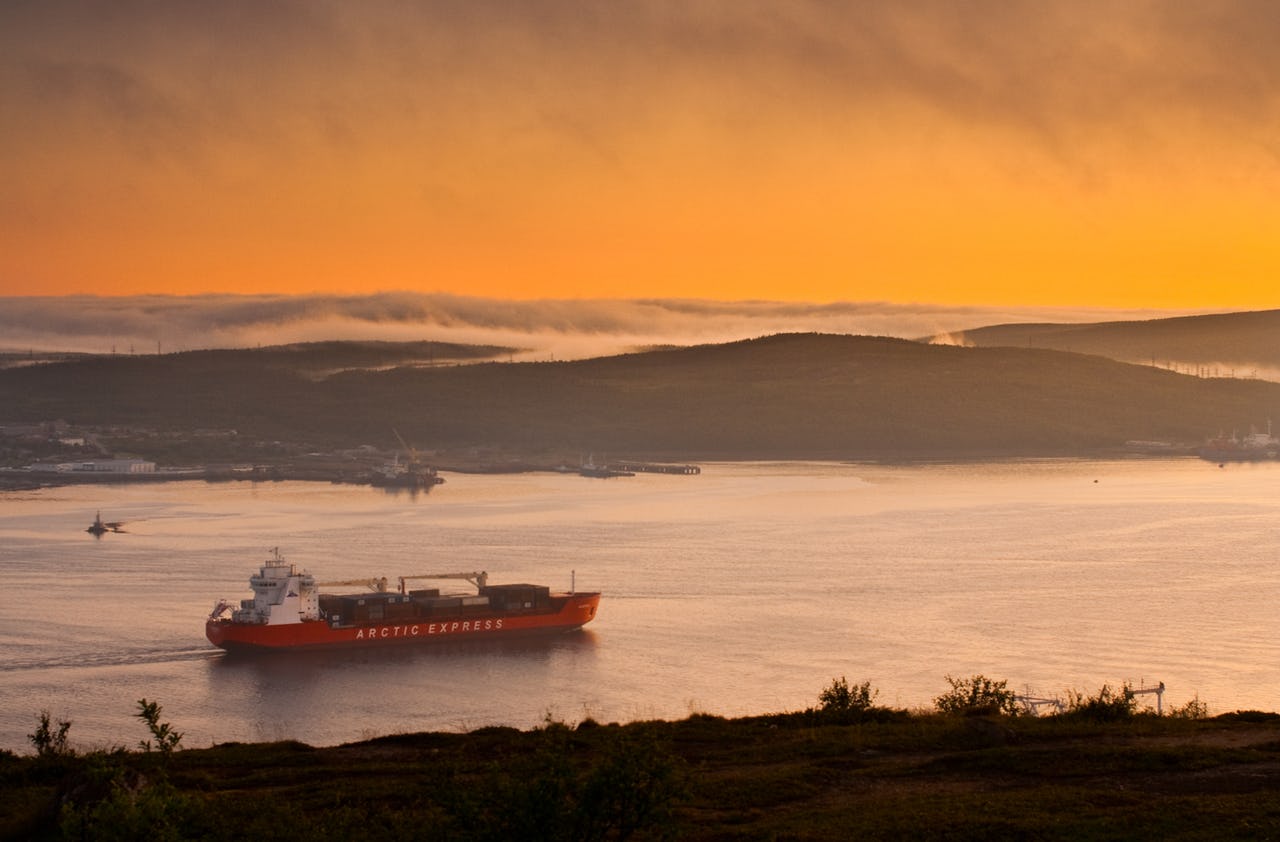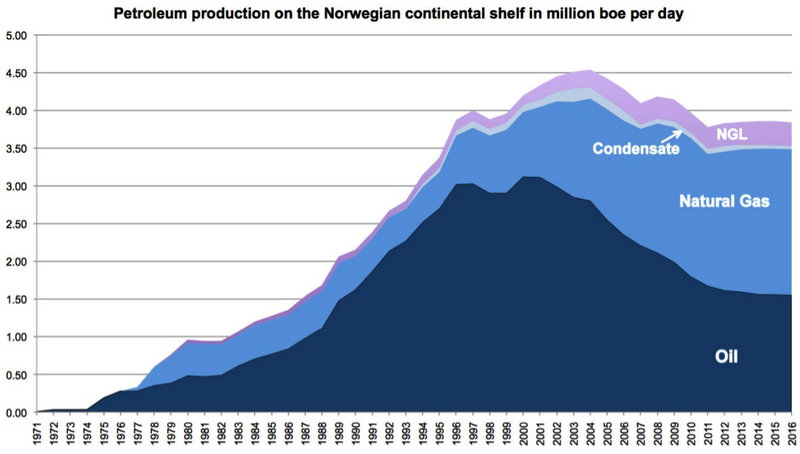Norway's Energy Resource Policy and the Future of Bilateral Cooperation in the Barents Sea

Container ship Arctic Express gliding from the terminal through Kola Bay to Barents Sea. Photo: Tom Thiel
The Barents Sea, a region potentially rich in natural resources, has recently entered the global energy stage. The historic agreement between Norway and the Russian Federation on the delimitation of the maritime border in the Barents Sea in 2010 created a favorable environment for increased hydrocarbon exploration and may usher in a new period of cooperation in the Arctic between the two countries. In spite of the great uncertainty about the actual resource potential in the Barents Sea, and developmental pace and concepts, both Norway and the Russian Federation continue to increasingly develop their Arctic petroleum activities.
Norway’s energy development in a post-North Sea era
Norway’s economic rise as one of the most affluent countries and as one of the world’s largest oil and natural gas producers has its origin with the discovery of the Ekofisk field in the North Sea in 1969. The Barents Sea and its expected vast hydrocarbon resources may become Norway’s North Sea of the 21st century. As more and more North Sea fields begin to mature Norway’s oil production continues to decline. Despite new discoveries and production from fields in the Norwegian Sea, oil production peaked at 3.1 million barrels per day (mbpd) in 2001 and has since decreased by 50 percent.
Norway’s gas production on the other hand continues to grow and in 2011 the country produced around two million barrels of oil equivalent (mboe) per day. Norway’s Snøhvit field, which came online in 2007, may just be the first of a number of developments on the Norwegian continental shelf of the Barents Sea.
In addition to substantial natural gas prospects, the Barents Sea also offers significant potential for Norway to recover from slumping oil production. The Havis and Skrugard fields, both discovered in the last 12 months, have the potential to transform the High North into a new petroleum province. Together they may contain between 400-600 million barrels of recoverable oil. The nearby Goliat field, discovered in 2000 and expected to come online in 2013, contains around 174 million barrels of recoverable oil. If Havis and Skrugard can be developed as rapidly as Goliat, oil may yet regain some of the share of overall petroleum production it lost to natural gas. In addition, the Aldous South prospect in the North Sea, the most significant oil discovery in Norway since the mid 1980s, could end up delivering between 900 million and 1.5 billion barrels of recoverable oil at a time where North Sea fields are facing declining production.

As a result of these new oil discoveries in the North and Barents Sea, the National Petroleum Directorate (NPD) has slightly increased its 5 year forecast and expects production by 2016 to hold steady around 1.6 mbpd, a similar to the one forecasted for 2012. This represents a stark contrast to analysis from as recent as 2008, which predicted that “Norway will have dramatically reduced export volume of oil by 2030 and will barely be an oil exporter by 2030, with only a few hundred thousand barrels of oil available for export in the best case.” An additional unknown in the future oil developments of Norway is the significant potential off the coast of the Lofoten archipelago. The area may hold as much as 1.3 billion barrels of recoverable oil. Ten of the world’s largest oil companies including Exxon Mobil, Shell, Total and BP, recently spent NOK 540 million (about 95 million USD) to secure the results of a seismic survey conducted around the Lofoten, the Vesterålen, and Senja islands by the NPD.
Environmentalists, however, caution that the area’s extremely narrow sea shelf and the resulting proximity of potential drilling areas to the shore presents significant obstacles to the development of the reserves. The waters around the Lofoten archipelago are home to a number of fisheries and are a spawning area for Northeast Arctic cod. In addition the region is one of the most popular tourist destinations in Norway, representing a significant source of local income. As a result, the question of whether the Lofoten area will be opened up for prospecting has become so contentious that it has been put on hold until after the next Norwegian parliamentary election in 2013. If these areas will be developed may also partly depend on the availability and exploitation of shale gas resources in Europe. Large-scale development of shale gas resources akin to the exploitation in the United States, may result in less demand for Norwegian natural gas and prompt Norway to shift its attention to developing oil deposits, e.g. off the coast of the Lofoten archipelago, instead.
Future Cooperation in the Barents Sea
The 2010 agreement removed a potential source of regional conflict and may act as “appetizer” for future cooperation between Norway and the Russian Federation. The treaty explicitly outlines the rules and procedures for the exploitation of shared hydrocarbon resources (Article 5, Annex II), which has already resulted in positive effects on opening new areas to petroleum exploration. The agreement’s requirement for joint exploitation of potential trans-boundary deposits allows for significant exchange of knowledge and technology.
Norway has started with local seismic mapping of the earlier disputed area in 2011 and already mandated an initial impact assessment study. The Russian Federation plans to begin exploration of the transnational Fedynski Ridge (in Norwegian: Hjalmar Johansen Ridge) later this year. The agreement is the starting point for potential step-by-step development, which could evolve into a new regional petroleum industry.
The significant potential for future petroleum discoveries off the northern shores of Norway will have a lasting impact on the region’s economy, but may also negatively affect the fragile Arctic environment. The maritime delimitation agreement not only offers the basis for an active energy dialogue, the exchange of knowledge on hydrocarbon exploitation, and new partnerships between Norway and the Russian Federation, but could also pave the way to further bilateral environmental cooperation and even closer cooperation of the Joint Fisheries Commission. Collaboration in the Barents Sea may lead to the development of trans-border offshore and onshore infrastructure and simultaneously allow for a holistic trans-boundary management plan which respects the need to balance economic interests and the fragility of the Arctic environment.
This op-ed was originally published by The Institute of the North on 21 March 2012 in their weekly newsletter Top of the World Telegraph.